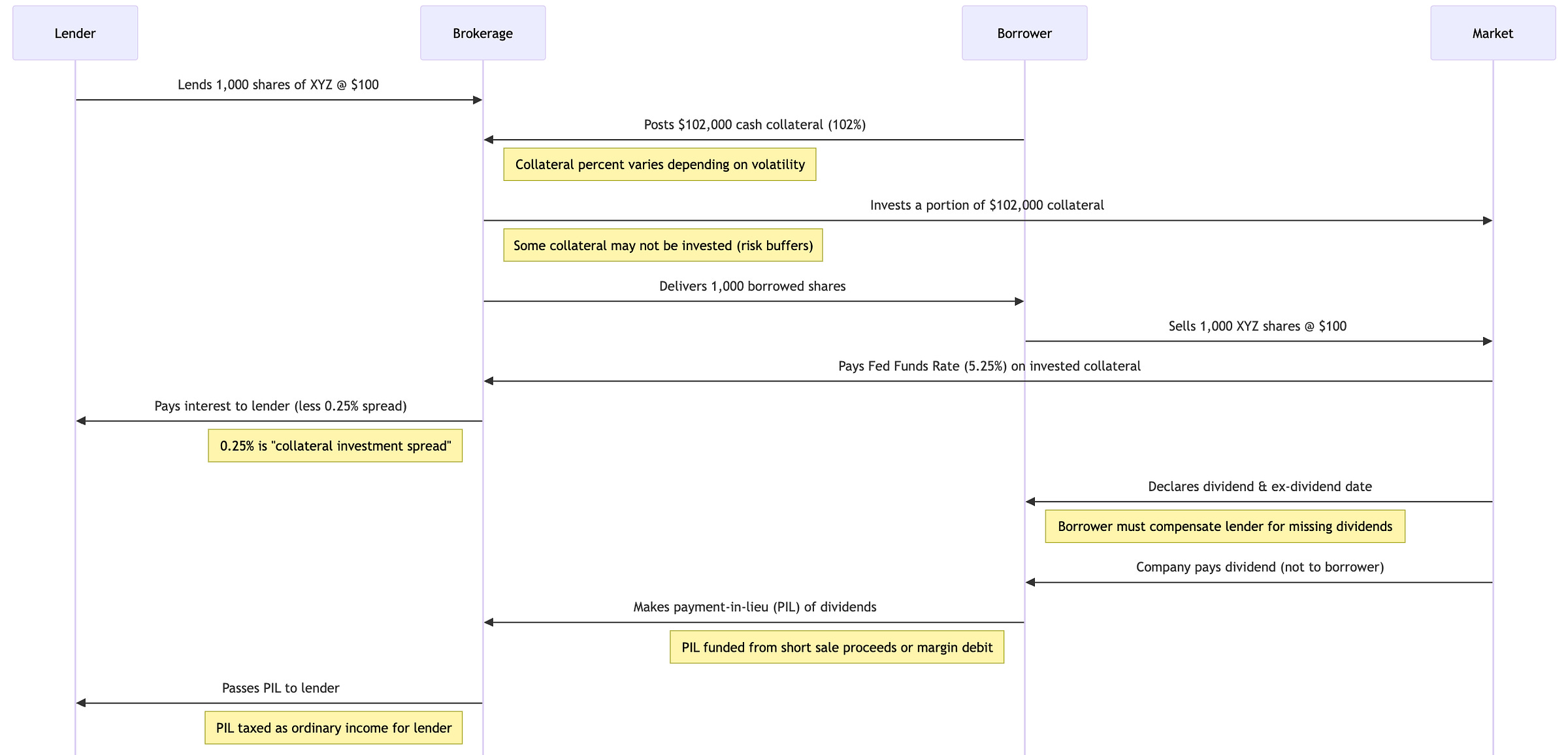Payment in lieu is taxing you
Securities lending might mean paying more tax.
Most major brokerages lend securities to short-sellers. The lender could be an ETF or individual investor. Securities lending is big business.
The short-seller/borrower owes any dividends received to the lender.
But a borrower can’t make a dividend payment, l…


